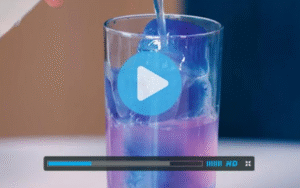An enlarged prostate, also known as benign prostatic hyperplasia (BPH), is one of the most common health concerns among aging men. This condition affects the prostate gland, a walnut-sized organ responsible for producing fluid that nourishes and transports sperm. As the prostate grows, it can press against the urethra and bladder, leading to urinary problems such as frequent urination, weak stream, and incomplete emptying of the bladder.
While medical treatments and surgery are available, many men look for natural ways to shrink prostate size, relieve symptoms, and improve quality of life. The good news is that lifestyle adjustments, dietary changes, and specific herbal supplements can support prostate health naturally. In this article, we will explore the most effective strategies for managing BPH without relying solely on prescription drugs.
Why Consider Natural Ways to Shrink Prostate?
Conventional treatments for BPH often include medications such as alpha-blockers or 5-alpha reductase inhibitors, and in severe cases, surgical intervention. While effective, these options may cause side effects such as dizziness, fatigue, erectile dysfunction, or reduced libido.
Natural approaches provide men with gentle yet effective methods to manage prostate health. These methods may not only reduce symptoms but also support overall well-being.
Diet and Nutrition for Prostate Health
One of the most effective natural ways to shrink prostate size is through diet. Research shows that certain foods can reduce inflammation, balance hormones, and improve urinary function.
Foods That Support Prostate Health:
- Tomatoes and tomato products: Rich in lycopene, a powerful antioxidant that may help lower prostate enlargement risk.
- Green tea: Contains catechins that support hormonal balance and reduce inflammation.
- Pumpkin seeds: High in zinc, which plays a role in prostate function.
- Cruciferous vegetables: Broccoli, kale, and cauliflower contain compounds that may protect against prostate growth.
- Berries: Packed with antioxidants to combat oxidative stress.
Foods to Avoid:
- Red and processed meats
- Excessive dairy products
- High-fat fried foods
- Sugary and refined carbohydrates
Adopting a plant-based, antioxidant-rich diet is one of the simplest natural ways to shrink prostate and maintain long-term health.
Herbal Remedies and Supplements
Herbs and natural extracts have been used for centuries to support urinary and prostate health. Some of the most effective options include:
- Saw palmetto: One of the most studied natural remedies, saw palmetto helps block the enzyme responsible for prostate enlargement.
- Pygeum africanum: Extract from African plum tree bark, known to improve urinary flow and reduce nighttime urination.
- Beta-sitosterol: A plant sterol found in many fruits and vegetables that helps improve urinary symptoms.
- Stinging nettle root: Often used in combination with other herbs to support prostate health.
- Pumpkin seed oil: Shown to reduce BPH symptoms and improve bladder function.
These supplements, when taken under medical guidance, can be effective natural ways to shrink prostate size and improve daily comfort.
Exercise and Physical Activity
Staying active is a critical part of prostate health. Regular exercise not only helps maintain a healthy weight but also reduces inflammation and improves circulation to the pelvic area.
Beneficial Activities Include:
- Aerobic exercises: Walking, swimming, or cycling for at least 30 minutes daily.
- Strength training: Helps regulate hormones and reduce excess fat, which contributes to BPH.
- Pelvic floor exercises (Kegels): Strengthens bladder control and reduces urinary urgency.
A consistent exercise routine is one of the easiest natural ways to shrink prostate symptoms while also boosting overall health.
Hydration and Bladder Habits
How you hydrate and manage your bladder can also influence prostate symptoms.
- Drink enough water throughout the day, but limit fluids two hours before bedtime to reduce nighttime urination.
- Avoid excessive caffeine and alcohol, which irritate the bladder.
- Practice timed voiding by setting bathroom breaks every few hours to train your bladder.
These small changes can make a big difference in urinary comfort.
Stress Management and Sleep
Chronic stress and poor sleep can worsen hormonal imbalances and inflammation, contributing to prostate enlargement. Effective natural ways to shrink prostate also include reducing stress levels through:
- Meditation and mindfulness practices
- Deep breathing exercises
- Yoga or tai chi
- Prioritizing 7–9 hours of quality sleep each night
Better stress control supports both prostate and overall health.
Weight Management
Obesity is linked to higher risks of BPH and prostate problems. Extra fat tissue can increase inflammation and hormone imbalances, leading to further prostate growth. Maintaining a healthy weight through proper diet and exercise is another proven method to support prostate health naturally.
When to See a Doctor
While natural ways to shrink prostate can be highly effective, men experiencing persistent or severe symptoms should consult a healthcare provider. Frequent nighttime urination, blood in the urine, or difficulty urinating may indicate more serious conditions, including prostate cancer.
Combining medical evaluation with natural strategies ensures the best outcomes.
Conclusion
Managing prostate health does not always require medication or surgery. Many men find relief through natural ways to shrink prostate size, including healthy dietary choices, regular exercise, stress reduction, and the use of herbal remedies. These methods not only improve urinary symptoms but also promote overall well-being and vitality.
By adopting these natural approaches early, men can take proactive steps to support prostate health and enjoy a better quality of life as they age.
>> Click here now to find out the doctor-recommended prostate-shrinking mineral juice



